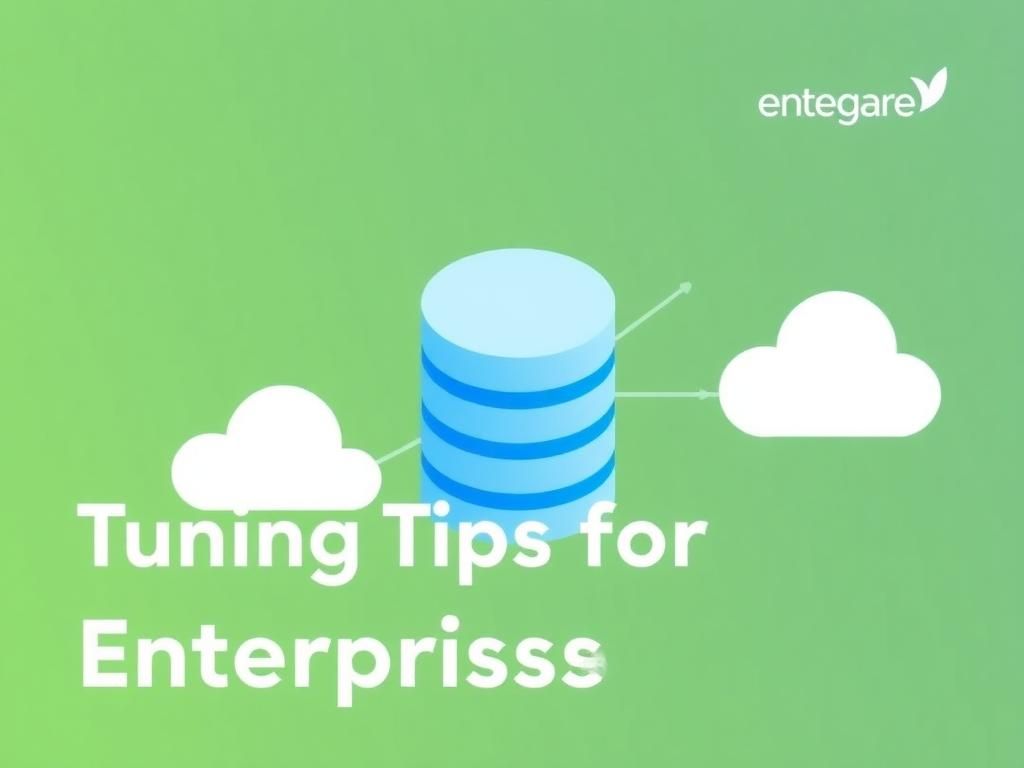Essential Database Tuning Tips for Enterprises
Discover crucial database tuning tips that can enhance performance and efficiency for enterprises. Optimize your database management today.

In today’s data-driven world, enterprises rely heavily on databases to store, manage, and retrieve critical information. However, as data volumes grow and application demands increase, the need for effective database tuning becomes paramount. Efficiently tuned databases not only enhance performance but also ensure optimal resource utilization, leading to improved response times and reduced operational costs. In this article, we explore essential database tuning techniques that can help enterprises achieve superior performance and maintain a competitive edge.
Table of Contents
Understanding Database Performance Tuning
Database performance tuning is the process of optimizing database configurations, queries, and structures to improve the speed and efficiency of data retrieval and storage. It involves analyzing and adjusting various parameters, including hardware resources, database engine configurations, and application queries.
Key Components of Database Tuning
To effectively tune a database, it’s essential to understand the key components that influence its performance:
- Hardware Resources: CPU, RAM, Disk I/O, and Network bandwidth.
- Database Configuration: Settings specific to the database management system (DBMS) being used.
- Schema Design: The structure and organization of the database tables and relationships.
- Query Optimization: Techniques to enhance the efficiency of SQL queries.
- Indexing: The use of indexes to speed up data retrieval.
Best Practices for Database Tuning
Implementing best practices can greatly enhance the performance of your databases. Below are some effective strategies:
1. Regularly Monitor Performance
Continuous monitoring of database performance metrics is crucial. Tools such as:
- SQL Server Management Studio (SSMS)
- Oracle Enterprise Manager
- MySQL Workbench
These tools can help track response times, query execution plans, and system resource usage. Consider setting up automated alerts for performance degradation.
2. Optimize Queries
SQL queries often serve as the backbone of database interactions. Optimizing these queries can lead to significant performance improvements. Here are some techniques:
- Use EXPLAIN to analyze query performance and execution plans.
- Limit the use of SELECT *; instead, specify only the necessary columns.
- Use joins efficiently and avoid subqueries when possible.
- Consider using stored procedures for complex operations.
3. Implement Proper Indexing
Indexing is one of the most effective ways to improve data retrieval times. Consider the following when implementing indexing:
| Index Type | Description | Use Cases |
|---|---|---|
| B-tree Index | Standard index type for quick data retrieval. | General-purpose queries. |
| Bitmap Index | Efficient for columns with low cardinality. | Data warehousing applications. |
| Full-text Index | Optimizes search and retrieval of text data. | Search functionality on large text fields. |
4. Fine-Tune Database Configuration
Database configurations can vary significantly across different DBMSs. Here are some common parameters to tune:
- Buffer Size: Increasing buffer cache size can reduce disk I/O.
- Connection Pooling: Optimize the number of connections to reduce overhead.
- Log File Management: Ensure log files are managed efficiently to avoid bottlenecks.
Advanced Tuning Techniques
For enterprises looking to take database performance to the next level, consider advanced tuning techniques:
1. Partitioning
Partitioning involves dividing a large database into smaller, more manageable pieces. Benefits include:
- Improved query performance by limiting the amount of data scanned.
- Enhanced maintenance operations, such as backups and restores.
2. Sharding
Sharding is a method of horizontal partitioning where different data sets are stored across multiple servers. This can distribute the load and enhance scalability. Key points include:
- Each shard operates independently, allowing for better performance.
- Enables better resource utilization across multiple servers.
3. Caching Strategies
Implementing effective caching can drastically reduce database load. Consider using:
- In-memory Caching: Store frequently accessed data in memory.
- Content Delivery Networks (CDNs): Cache static content closer to users.
Conclusion
Database tuning is a critical aspect of maintaining high-performance enterprise applications. By adopting regular monitoring, optimizing queries, and leveraging advanced techniques like partitioning and sharding, enterprises can ensure their databases are responsive and efficient. As data continues to grow, investing in database performance tuning will not only enhance operational capabilities but also drive business success.
FAQ
What is database tuning and why is it important for enterprises?
Database tuning is the process of optimizing database performance by adjusting configuration settings, queries, and schema design. It is crucial for enterprises to ensure efficient data retrieval, reduced latency, and overall improved application performance.
How can indexing improve database performance?
Indexing creates a data structure that improves the speed of data retrieval operations on a database table. Properly implemented indexes can significantly reduce query response times, making data access more efficient for enterprise applications.
What role does query optimization play in database tuning?
Query optimization involves analyzing and rewriting SQL queries to ensure they run as efficiently as possible. This process can lead to reduced resource consumption and faster execution times, thereby enhancing the overall performance of the database.
How often should database performance be monitored and tuned?
Database performance should be monitored continuously, with regular tuning sessions scheduled based on performance metrics and workload changes. Frequent assessments help identify potential bottlenecks and ensure optimal performance.
What are some common database tuning tools for enterprises?
Common database tuning tools include SQL Server Management Studio, Oracle Enterprise Manager, and MySQL Workbench. These tools provide features for performance monitoring, query analysis, and tuning recommendations, aiding enterprises in maintaining optimal database performance.
Can hardware upgrades improve database performance?
Yes, upgrading hardware such as increasing RAM, using faster SSDs, or enhancing CPU capabilities can significantly improve database performance. However, it’s essential to combine hardware improvements with proper tuning for optimal results.


